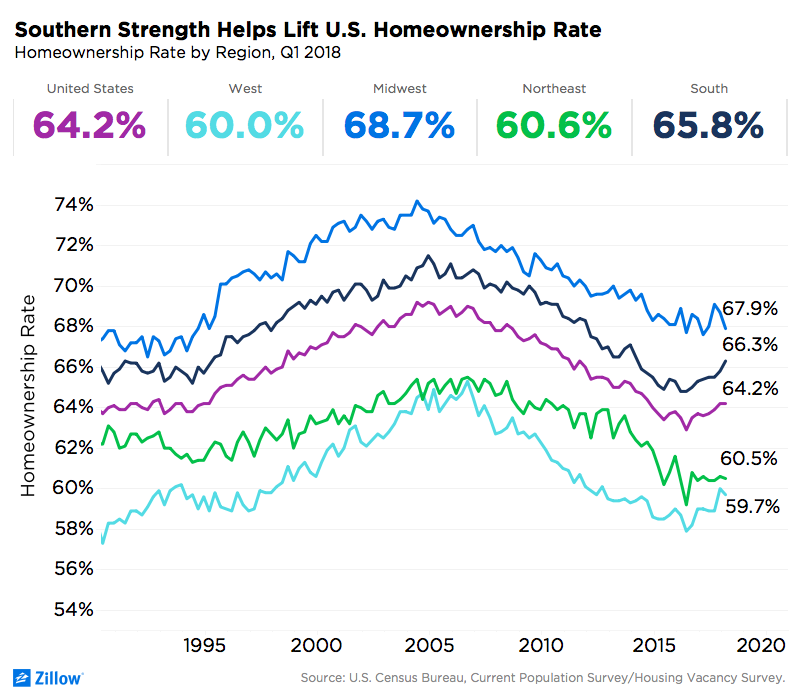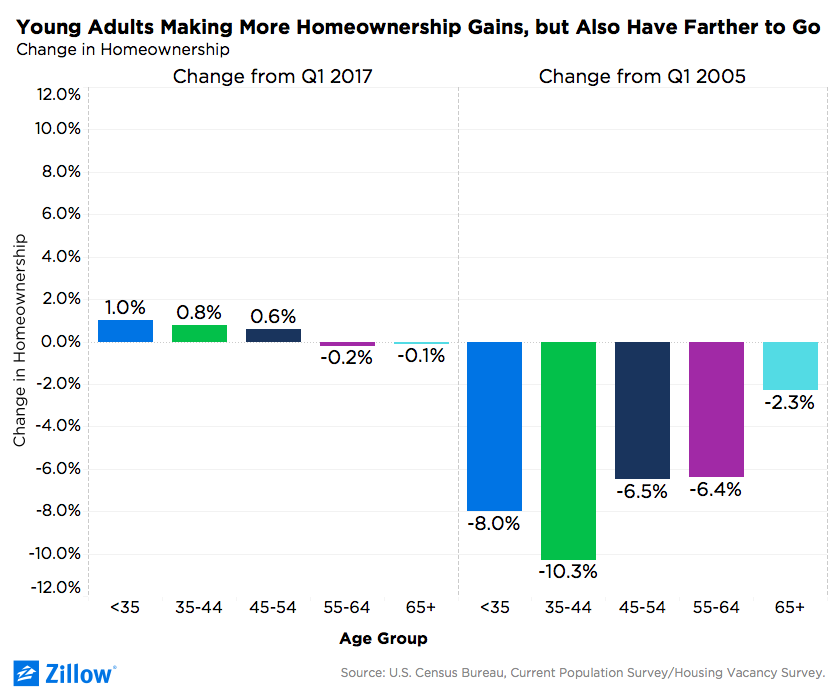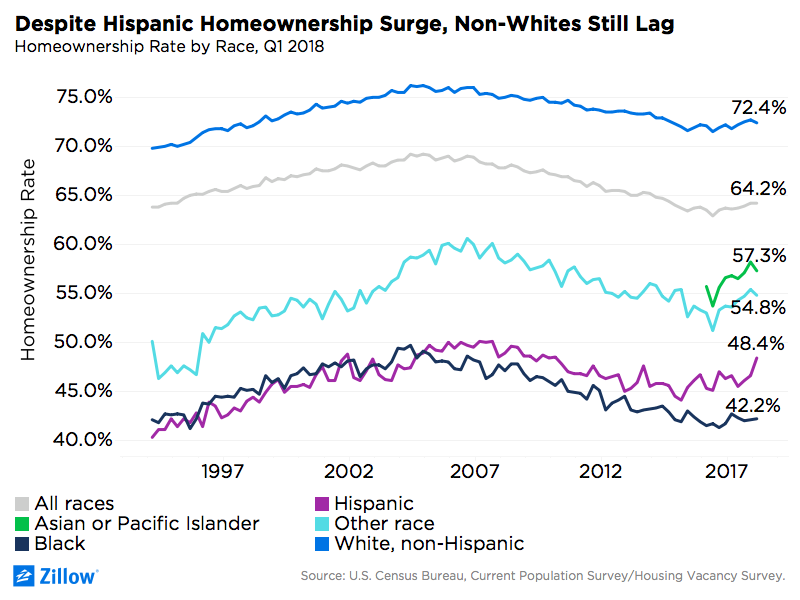Hispanics, Young Adults Pushing Up U.S. Homeownership Rate
The seasonally adjusted U.S. homeownership rate is currently enjoying its longest uninterrupted run of quarterly gains since the turn of the 21st century, driven higher by advances among Hispanics and younger adults.
- The seasonally adjusted homeownership rate has risen or remained flat for seven consecutive quarters, the longest uninterrupted streak without a quarter-over-quarter decline since a 15-quarter run from Q3 1999 to Q1 2002.
- In each of the past three quarters (most notably in Q4 2017), the number of homeowner households has increased sharply while the number of renter households has been largely flat.
- Over the past year, the homeownership rate has increased most among young adults and Hispanics.
The seasonally adjusted U.S. homeownership rate is currently enjoying its longest uninterrupted run of quarterly gains since the turn of the 21st century, driven higher by advances among Hispanics and younger adults.
The homeownership rate edged 0.2 percentage points higher from the end of 2017 and 0.6 points higher than a year ago, to 64.2 percent (seasonally adjusted) in Q1 2018, the highest since Q3 2014. It has risen or remained flat for seven consecutive quarters, the longest uninterrupted streak without a quarter-over-quarter decline since a 15-quarter run from Q3 1999 to Q1 2002.
The more commonly reported non-seasonally adjusted rate was unchanged at 64.2 percent – buttressed by a sharp increase in the South, which negated declines in every other region.

In each of the past three quarters (most notably in Q4 2017), the number of homeowner households has increased sharply while the number of renter households has been largely flat – a reflection of the increasingly frenetic pace of the home purchase market over the past few months. There are currently 1.35 million (1.8 percent) more homeowner households and 286,000 (0.7 percent) fewer renter households compared to Q1 2017.
Youth Movement
Over the past year, the homeownership rate has increased most among young adults – rising 1 percentage point (to 35.3 percent) for those under 35 years old. It has increased less among older adults, up 0.8 percentage points for those aged 35 to 44 (to 59.8 percent) and 0.6 percentage points (to 70 percent) for those 45 to 54 years old. And homeownership fell for the oldest Americans, falling 0.2 percentage points (to 75.4 percent) for those 55 to 64 years old and 0.1 percentage point (to 78.5 percent) for those aged 65 years and older.
Still, the homeownership rate for older adults remains much higher and closer to pre-recession peaks than for younger adults, a striking indication of just how hard the Great Recession impacted younger Americans even as older groups remained somewhat more protected. For adults under age 35, the homeownership rate is 8 percentage points below where it stood in Q1 2005, and for adults age 35 to 44 it is 10.3 percentage points off. For adults aged 65 and up, the homeownership rate is just 2.3 percentage points below its Q1 2005 level.

Non-White Winners
The non-seasonally adjusted homeownership rate fell or was flat for all major racial and ethnic groups in Q1 – except Hispanics. The homeownership rate among Hispanics increased 0.8 percentage points to 48.4 percent, its highest rate since Q1 2010. On average, Hispanics tend to be younger than other racial and ethnic groups, so some of the rising homeownership rate among Hispanics is tied to the rising homeownership rate among young adults nationwide.
Among the top 35 metro areas, the homeownership rate has increased most over the past year in Columbus (up 9 percentage points, to 64.1 percent), Pittsburgh (up 5 percentage points, to 75.4 percent) and Seattle (up 4.5 percentage points, to 62.7 percent). It has declined the most in San Diego (down 5.3 percentage points, to 52.6 percent), Baltimore (down 5.2 percentage points, to 65.2 percent), and Denver (down 3.8 percentage points, to 53 percent).




